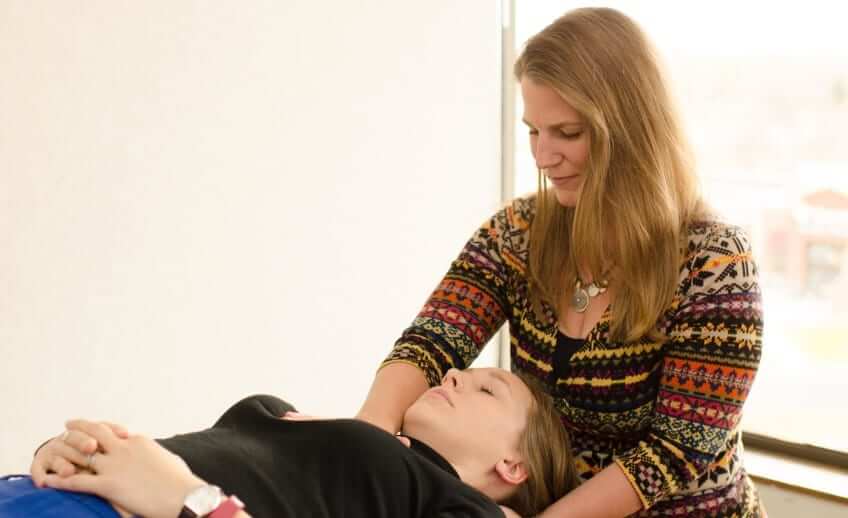Cervical spine pain can be the result of a single event or trauma, or the result of a combination of factors including poor posture, declining physical fitness, and/or repetitive activities, including faulty lifting, bending, or twisting. Previous injury and family history may also be a contributing factor.
Neck pain is usually non-serious and resolves within 2-6 weeks. Sometimes, neck pain is accompanied by headache or pain between the shoulder blades or down the arm. Physical therapists at Saunders Therapy Centers can get to the root cause of your pain, and provide immediate treatment to lessen the intensity and duration of your pain. In some cases, you only need one or two clinic treatments. Common causes of neck pain include:
Muscle Strain: Sleeping without proper support, over-working during exercise, or turning your neck the “wrong way” can cause a temporary but very painful strain. You may not be able to rotate, flex, or extend your neck fully. Pain can be in the neck or between the shoulder blades.
Cervical Osteoarthritis: This is a wear-and-tear condition, also called neck arthritis. As we age, the space between vertebrae in the neck decreases, and excessive friction can cause pain. Even though structural changes are inevitable with age, pain is not! Improving posture and strengthening the stabilizing muscles is key to help with this condition.
Cervical Degenerative Disc Disease: Though scary-sounding, this condition is closely related to osteoarthritis, in that it is a wear-and-tear condition. Disc degeneration typically causes a low-level chronic neck pain with occasional episodes of more severe pain. Treatment is similar to osteoarthritis and involves postural training, strengthening, and manual therapy.
Facet Joint Syndrome: The joints between each vertebra can become slightly misaligned or inflamed, causing pain. Manual therapy techniques can restore normal motion and decrease inflammation.
Cervical Disc Herniation: Between each vertebra is a structure called the “disc”, which can bulge or herniate, placing pressure on nearby structures including the nerves. More severe disc herniations can cause arm and hand pain and weakness. Cervical traction and manual therapy techniques can be helpful. Surgery is not always necessary, so physical therapy should usually be tried first.

How Can We Help?
Saunders Therapy Centers therapists are highly skilled at evaluation, and will know the specific techniques to use depending on the source of your symptoms. When your pain improves (often rapidly!), almost all neck pain patients benefit from postural restoration and exercise to restore normal muscle length and strength to prevent a future episode.
